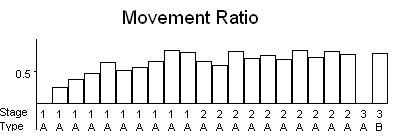
Blocking effect
Encyclopedia

Leon Kamin
Leon J. Kamin is an American psychologist who chaired Princeton University's Department of Psychology in 1968....
's blocking effect demonstrates that conditioning
Classical conditioning
Classical conditioning is a form of conditioning that was first demonstrated by Ivan Pavlov...
to a stimulus could be blocked if the stimulus were reinforced in compound with a previously conditioned stimulus.
For example, an animal is exposed to conditioned stimulus 1 (CS1), which predicts the occurrence of a reinforcer. After learning the paired association between CS1 and unconditioned stimulus (US), a compound stimulus composed of CS1 and another stimulus 2 (CS2) is presented with the US. Hence both CS1 and CS2 are stimuli that predict the US.
However, when tested, the animal shows little, if any, CS2–US association. This is because the occurrence of the US was fully predicted by CS1 alone, and hence no learning occurs when CS2 is presented simultaneously. In other words, CS2–US association is blocked because CS1–US association already exists.
This effect was most famously captured mathematically by the Rescorla–Wagner model. As this model learns based on the extent to which the US isn't predicted by the set of present CSs, it can account for the blocking effect. Blocking can also be considered a general feature of many models that learn based on an error signal.

